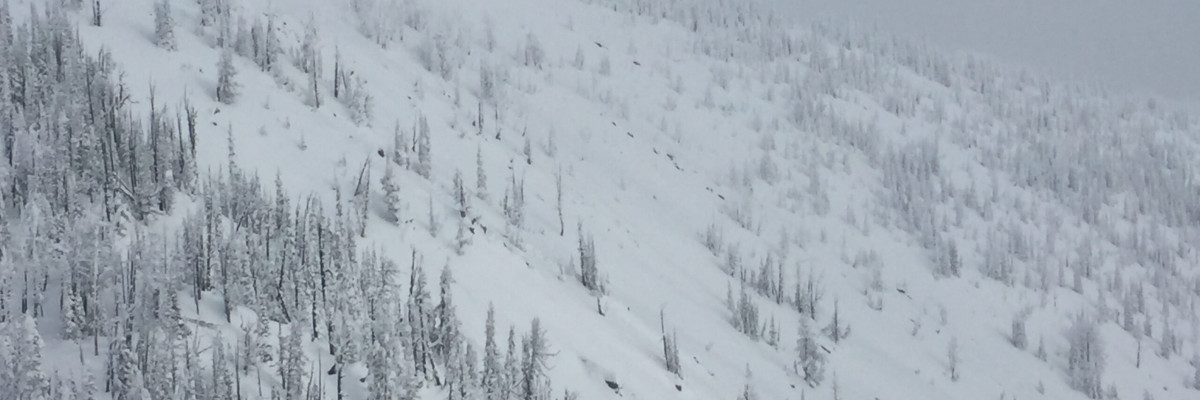The current avalanche danger is MODERATE for the West Central Montana backcountry. Human triggered avalanches are possible in specific terrain. Evaluate the snow and terrain carefully to to identify features of concern.
Good morning, this is Logan King with the West Central Montana Avalanche Center’s avalanche advisory for March 30, 2017. This danger rating does not apply to operating ski areas, expires at midnight tonight and is the sole responsibility of the U.S. Forest Service.
Weather and Snowpack
The next pulse of moisture has moved into the region and has been primarily rain but a few snotels are reporting up to 3 inches of snow in the advisory area. SWE’s have ranged from .3-.7 inches of water as the storm system is warm and wet with rain line at about 7,000 feet. Mountain temperatures this morning are in the mid 30‘s. Winds have been light; Point 6 is reporting winds of 13 mph gusting to 23 mph from the WNW. Deer Mountain has winds sustained at 6 mph and gusting to 11 mph from the WSW.
The primary avalanche concern today is storm slabs above 7,000 feet. Over the last few days about a foot of snow has accumulated at upper elevations and more snow is expected today as temperatures look to drop and snow levels will lower. Carefully evaluate how well the new snow is bonding to the old snow before committing to avalanche terrain.
The secondary concern is loose snow avalanches. The loose snow avalanches will be dry above 7,000 feet and will be wet at lower elevations. Appropriate terrain selection is important when dealing with loose snow avalanches. Identify features of concern and terrain traps that increase the consequences of getting caught in a slide.
Avalanche and Weather Outlook
Scattered and variable accumulations of snow will dominate the weather pattern for the region and should persist into the weekend. With moderate accumulations and no major changes in the weather the avalanche danger will remain the same through today and into tomorrow.
If you are out in the backcountry, please send us your observations, these are very helpful in producing the advisory. The next advisory will be issued April 1, 2017, and will be the last regular advisory of the season. Updates on avalanche conditions will be posted as necessary.
Ski and ride safe.
























